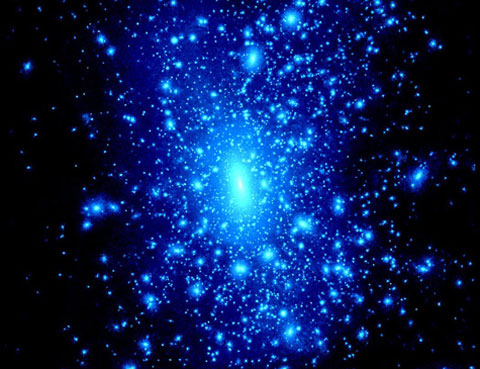Black energy really exists
A group of 26 scientists from Swinburne University, Melburne in Australia have claimed to have demonstrated the existence of black energy, an antigravity force that has the effect of pushing matter and causing the universe. Expansion accelerates, placing an important milestone in analyzing the origin, evolution and future fate of our universe.
>> Cosmic expansion: Einstein's black energy and cosmological constant
This is the first independent statement that not only proves the existence of black energy but also calculates the expansion rate of the universe after more than a decade of renewed energy theory.

Black energy really exists. Photo: Discovery.
Dr. Chris Blake of the research group affirmed: 'This indicates that physicist Albert Einstein had a correct assumption. 'Black energy has a precursor to cosmological constant, an antigravity force that extends the spacetime structure of the universe that Einstein invented more than 100 years ago when he developed relativity. and found that the universe was not as balanced as the scientists thought at the time. However, while alive, he removed the cosmological constant from his theory.
Later, the famous astronomer Edwin Hubble discovered that the universe was in fact expanding, which was in accordance with Einstein's original theory of relativity.
13 years ago, astronomers observed a cluster of stars known as the famous Type 1A Superstar in astronomers discovered that not only was the universe expanding but the rate of expansion continuously increased. because an unspecified force has a black energy name. People turned over Einstein's hypothesis about the cosmological constant.
However, until before this study of 26 Australian scientists, still no one is sure how specific black energy is or does it really exist?
According to Mr. Blake, ' Physics has a lot to discover.' This publication defines the direction and issues to be studied further than the universe: black energy.
To reach the conclusion of the study, Blake and his colleagues spent four years using a spectrophotometer at the Australian Observatory to collect data about 240 thousand galaxies that were 7 billion years ago when the universe was as young as half-year-old today.
Mr. Blake argues: ' Observations show that the maturation of the cosmic structure, the development of galactic clusters and super clusters are slowing. This proves that the furthest regions of the universe are more ancient in spacetime with ordinary matter and so gravity prevails. But today, this anti-gravitational black energy is stronger . '
Scientists then studied the distance between the above pairs of galaxies. According to Mr. Blake, ' the average distance between these galaxies is about 500 million light-years. This average distance is increasing because of the expansion of spacetime, and that is another proof of the existence of an antigravity quantity. '
However, this is all they currently know.
Detailed publication will be published in the June issue of Royal Astronomical Society (UK), one of the world's leading scientific and astronomical magazines.
- Unexpectedly discovered 5 mysterious black holes in the universe
- Stephen Hawking: People should use the energy of black holes to generate electricity
- Amazed new discoveries about the supermassive black hole wind
- Super black holes bombard the Earth with powerful cosmic rays
- Black hole detection
- Spending $ 19 million to get the first picture of black hole history
- Monster black hole 'belching' twice after swallowing gas
- NASA lens captures the moment of
- Life can form around cold black holes
- The explanation for the halo glows in the black hole
- Can destroy a cosmic black hole?
- Consumption of cosmic energy is 30 times more than expected
 Van Allen's belt and evidence that the Apollo 11 mission to the Moon was myth
Van Allen's belt and evidence that the Apollo 11 mission to the Moon was myth The levels of civilization in the universe (Kardashev scale)
The levels of civilization in the universe (Kardashev scale) Today Mars, the sun and the Earth are aligned
Today Mars, the sun and the Earth are aligned The Amazon owner announced a secret plan to build a space base for thousands of people
The Amazon owner announced a secret plan to build a space base for thousands of people